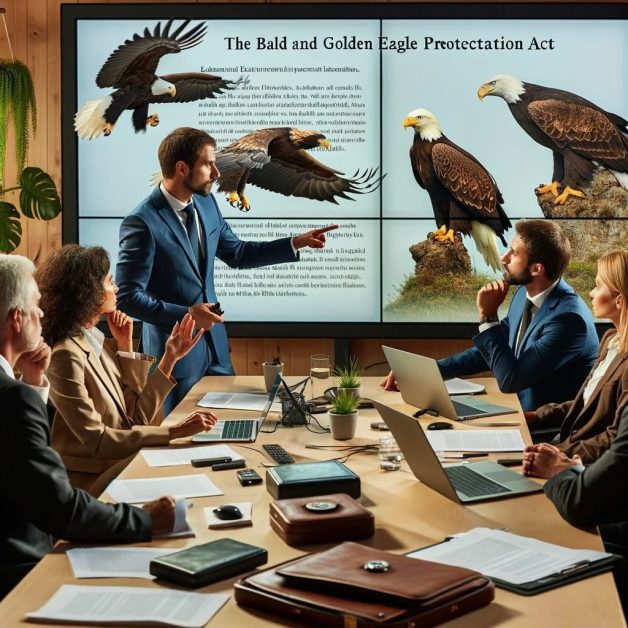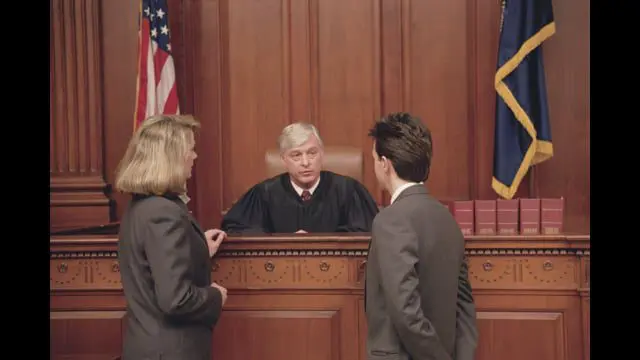
-
Abogados.Media
-
@abogados_media
-
linkedin
-
Digg
-
Newsvine
-
StumbleUpon
The Bald and Golden Eagle Protection Act, a critical piece of U.S. legislation, was enacted in 1940 to safeguard the bald eagle, the nation’s symbol, and later amended to include the golden eagle. This Act has played a pivotal role in the conservation of these iconic birds.
Historical Significance and Development
- The bald eagle was chosen as the U.S. national symbol in 1782. By the early 20th century, the population of these eagles was threatened, prompting legislative action.
- In 1940, the Bald Eagle Protection Act was enacted, and later, in 1962, it was amended to include the golden eagle, due to their similar appearances in early years and to bolster conservation efforts.
Provisions and Restrictions
- The Act prohibits the “taking” of bald and golden eagles, including their parts, nests, or eggs, without a specific permit issued by the Secretary of the Interior.
- “Taking” is broadly defined to include actions like shooting, poisoning, capturing, or disturbing the eagles.
- The law imposes criminal penalties for violators, including substantial fines and imprisonment, to deter activities harmful to these eagles.
Native American Religious Practices
- Recognizing the cultural significance of eagles in Native American religious practices, the Act provides an exemption for Native Americans, allowing for the use of eagles for religious purposes.
- Native Americans can obtain permits for using eagles in religious ceremonies, reflecting a balance between conservation efforts and respecting cultural traditions.
Recent Developments and Ongoing Challenges
- Over the years, the Act has been amended to increase penalties and address challenges in its enforcement.
- The successful conservation efforts have led to discussions about the status of the bald eagle, with proposals to remove it from the list of threatened species under the Endangered Species Act, though it remains protected.
- The Act continues to grapple with issues like administrative delays in obtaining eagle parts for Native American religious practices and conflicts with renewable energy projects like wind turbines.
Environmental Impact and Conservation Efforts
- Preservation of Eagle Populations: The Act has been pivotal in the conservation of bald and golden eagles in the U.S. The permits system under the Act allows the U.S. Fish & Wildlife Service (USFWS) to work proactively with public and private entities to reduce unintentional harm to eagles and ensure any such harm is offset. This approach has contributed to the recovery and stabilization of eagle populations.
- Impact of Human Activities: Despite the Act’s protections, eagles still face threats from human activities like wind farms, power lines, and mining operations. The USFWS has been working to mitigate these impacts through measures like the Eagle Conservation Plan, especially in the context of wind energy facilities. The plan provides guidance for conserving eagles during the siting, construction, and operation of wind energy facilities.
Recent Developments in the Act’s Application
- Permitting for Incidental Take: The USFWS has proposed rule revisions to improve eagle incidental take permitting. This includes allowing for accidental eagle deaths under specific conditions, provided companies submit a plan to prevent fatalities and report them when they occur.
- Compensatory Mitigation: For incidents where eagles are harmed, compensatory mitigation is required. This might involve habitat preservation, building nest platforms, or other actions to prevent or offset future losses.
- Long-term Permitting: The USFWS has proposed extending the permits’ term from five to 30 years. This revision aims to provide a more practical framework for industries whose operations span several decades and encourages them to engage in long-term conservation efforts.
Controversy and Legal Challenges
The proposed rule changes have been subject to controversy and legal challenges. Environmental organizations express concerns that the new rules might lead to more eagle fatalities, emphasizing the need for scientifically proven risk assessment and avoidance measures rather than relying on compensatory mitigation. There is an ongoing debate about balancing the needs of renewable energy development with the conservation of these iconic birds.
In summary, while the Bald and Golden Eagle Protection Act has been successful in aiding the conservation of these species, ongoing challenges remain, especially in light of modern industrial and developmental activities. The evolving nature of the Act’s application reflects the need to balance conservation efforts with other societal and economic priorities.
For further information on the Bald and Golden Eagle Protection Act, its environmental impact, and recent developments in its application, you can visit the U.S. Fish & Wildlife Service aquí and Audubon aquí.
Divulgación: Generative AI creó el artículo









